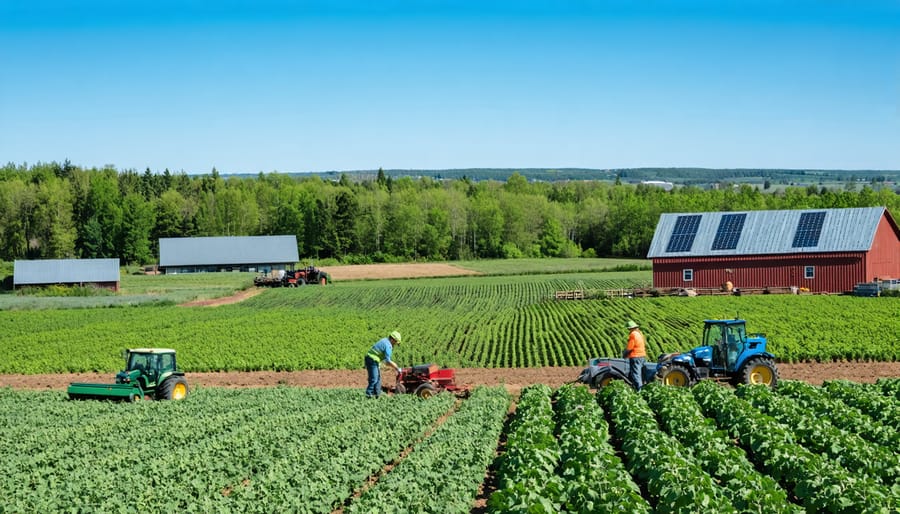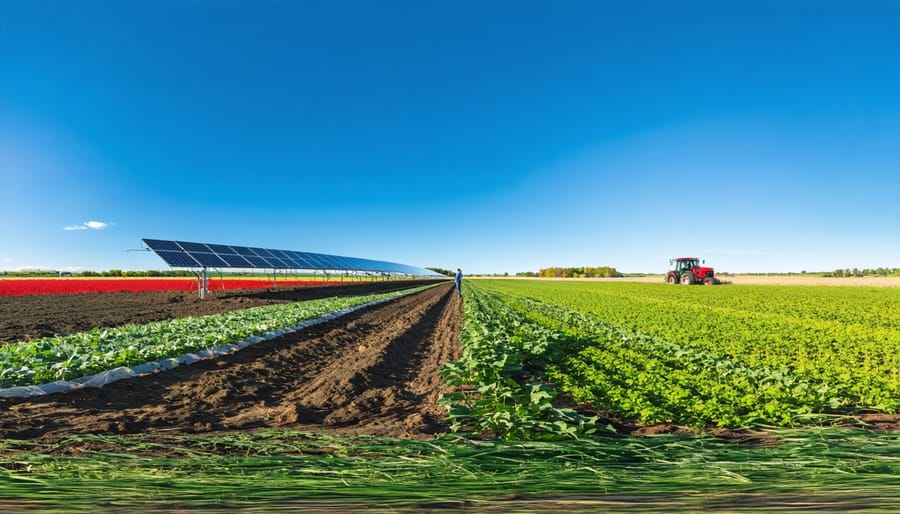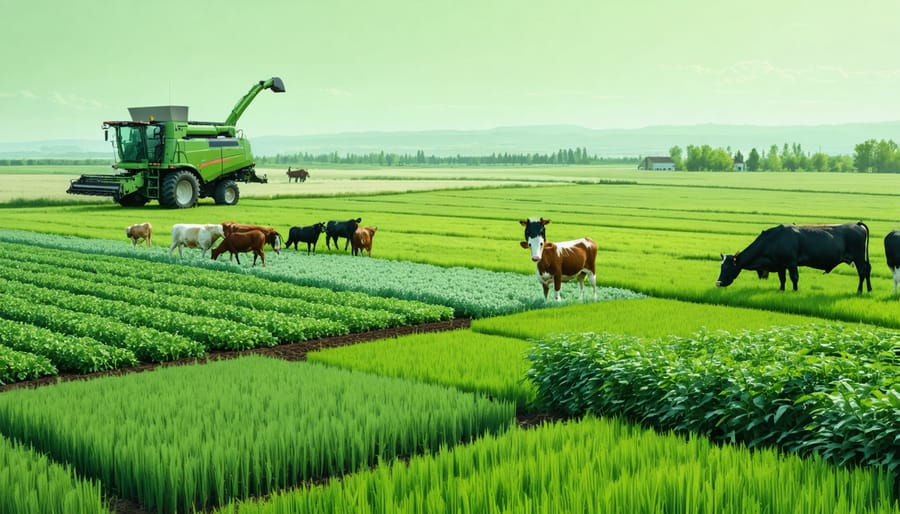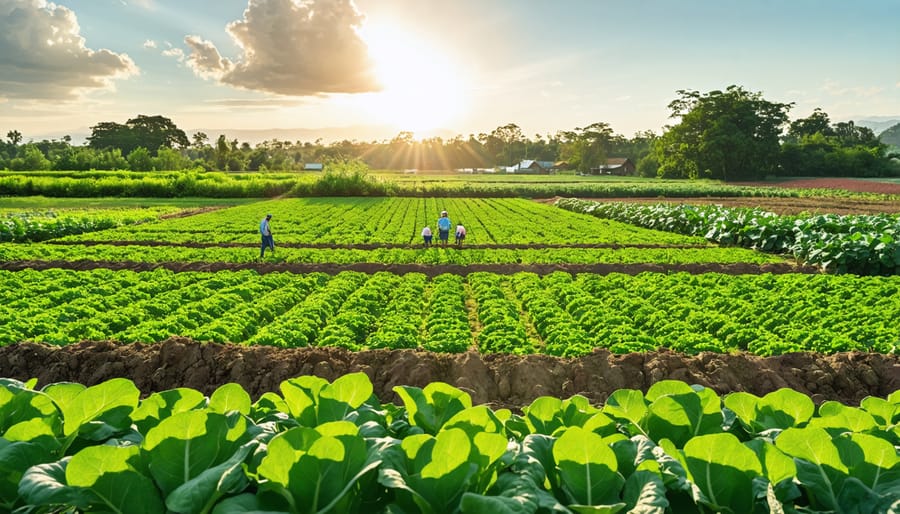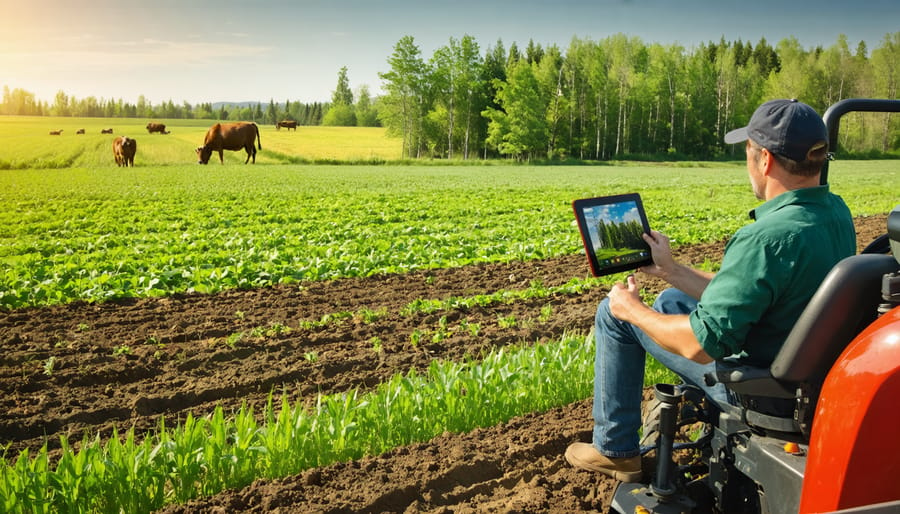Implement crop rotations to enrich soil health and suppress weeds, using legumes, grains, and cover crops to maintain soil fertility naturally. Introduce crimping methods for terminating cover crops without disturbing the soil, promoting a balance between reducing erosion and enhancing water retention. Utilize an appropriate roller-crimper to maximize efficiency and effectiveness in residue management. Integrate livestock strategically, allowing animals to graze on cover crops and improve nutrient cycling, aligning with regenerative practices. For further insights and climate-smart strategies, explore No-Till Organic Culture, which includes valuable resources and guidance specific to the Canadian context.
Principles of Organic No Till Farming
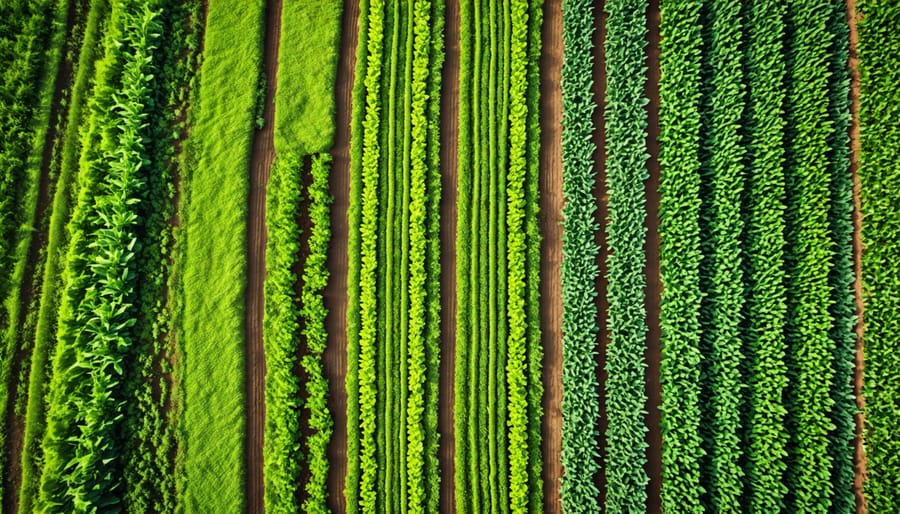
Emphasis on Soil Health
Organic no-till farming places a strong emphasis on improving soil health, recognizing it as the cornerstone of sustainable agriculture. By eliminating conventional tillage, this method minimizes soil disturbance, helping to maintain its natural structure—a crucial factor for farmers in Alberta seeking resilient crops. The benefits extend beyond structure, as organic no-till boosts soil fertility with cover crops which, when decomposed, enrich the soil with organic matter. This not only supports nutrient cycling but also encourages beneficial microbial activity, leading to healthier root systems and better yields. Enhanced water infiltration is another key perk, offering vital moisture retention during periods of drought—a common challenge in the Alberta region. Embracing this practice means fostering biodiversity both above and below ground, as highlighted by local experts who have witnessed firsthand the thriving ecosystems and robust harvests that result. Together, these elements make organic no-till a valuable practice for anyone committed to the sustainability of agriculture, positioning it as a community-driven solution to shared environmental challenges.
Biodiversity and Ecosystem Balance
Organic no-till farming harnesses the power of biodiversity to create a balanced and sustainable farming ecosystem. In regions like Alberta, this approach not only improves soil health but also enhances resilience against pests and diseases. By minimizing soil disturbance, a diverse range of beneficial organisms such as earthworms, bacteria, and fungi thrive, fostering nutrient-rich soil. This, in turn, supports a wide variety of plant species, promoting natural pest control and reducing dependency on synthetic inputs.
Canadian farmers can observe remarkable transformations through this method, as highlighted by local case studies where traditional tilling was replaced with organic no-till strategies. These farmers noted improvements in yield quality and quantity, with healthier crops and reduced erosion risks. The key is to maintain a varied crop rotation and cover cropping system, which encourages a balanced micro-ecosystem. Engaging with community networks and learning from expert interviews may provide additional insights into effective biodiversity management strategies, ensuring this sustainable practice continues to thrive in Canadian agriculture.
Implementing Organic No Till on Canadian Farms

Equipment and Tools
Organic no-till farming in Alberta requires specialized equipment such as roller-crimpers and no-till seed drills. A roller-crimper is used to knock down and crimp cover crops, creating a mulch layer that suppresses weeds. No-till seed drills allow seeding directly into this mulch, preserving soil structure and organic matter. For local farmers, suppliers like Highline Manufacturing and Clean Seed Capital Group provide these tools. Highline Manufacturing offers innovative solutions designed for Canadian climates, while Clean Seed Capital Group focuses on advanced no-till seeding technology. Connecting with these local suppliers ensures access to essential equipment, fostering community support and sustainable practices.
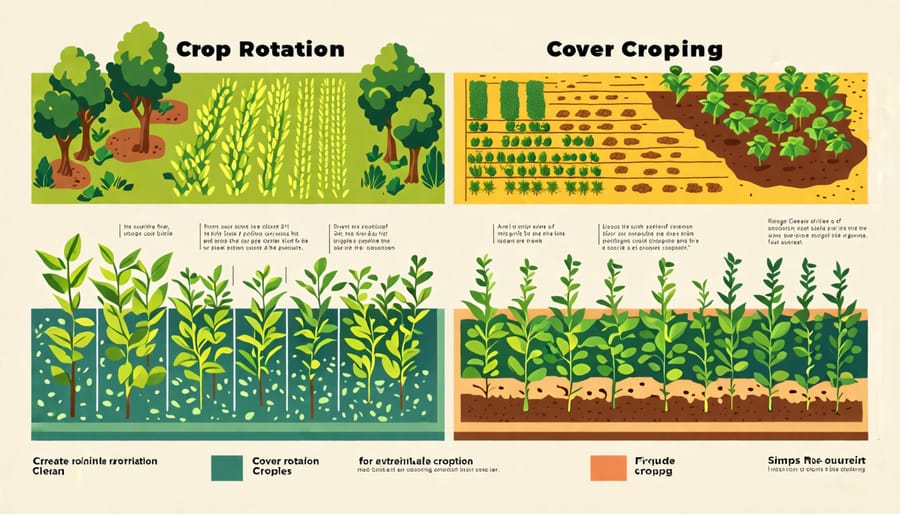
Crop Rotation and Cover Cropping
Crop rotation and cover cropping are cornerstones of organic no-till farming, offering both environmental benefits and practical advantages for Canadian farmers. In the Alberta region, farmers effectively manage soil health and increase biodiversity through diverse cropping cycles, avoiding the heavy reliance on synthetic inputs. Crop rotation disrupts pest and disease cycles while improving soil structure and fertility. By routinely changing crop types, such as rotating cereals with legumes, farmers enhance nitrogen levels naturally, promoting healthier plant growth.
Cover cropping complements rotation by covering the soil with living plants outside of regular growing seasons. These cover crops protect soil from erosion, suppress weeds, and boost organic matter. Many Alberta farmers have found success using species like clover and rye, which thrive in local conditions. By engaging in these practices, farmers foster a resilient agricultural ecosystem that supports sustainable yield and soil longevity. Embracing these strategies cultivates a community of forward-thinking growers dedicated to preserving their land for future generations.
Pest and Weed Management
In organic no-till farming, managing pests and weeds is crucial to maintaining soil health and productivity without resorting to conventional tillage methods. Canadian farmers, especially those in Alberta’s diverse agricultural landscapes, can adopt several strategies. Incorporating cover crops like clover or rye can effectively suppress weed growth by outcompeting them for sunlight and nutrients. These crops also attract beneficial insects that act as natural predators to common pests, reducing the need for chemical interventions.
Another approach is crop rotation, which disrupts the life cycle of weeds and pests specific to certain crops. By changing planting patterns, farmers can minimize infestations naturally. Additionally, using mulches can help cover the soil, preventing light from reaching weed seeds and inhibiting their growth.
Community collaboration can also be a powerful tool, sharing experiences and local insights through farmer networks and workshops. Implementing these strategies not only preserves soil integrity but also fosters a sustainable farming community committed to ecological balance and productivity.
Benefits and Challenges of No Till Organic Farming
Environmental and Economic Benefits
Organic no-till farming offers significant environmental and economic benefits, making it an attractive option for Canadian farmers, particularly in Alberta. By eliminating the need for disruptive tilling practices, this method helps maintain soil structure, reduce erosion, and increase water retention. This is crucial in Alberta’s diverse climate, where preserving moisture can lead to better crop yields. Moreover, organic no-till farming promotes biodiversity by maintaining habitats for beneficial insects and organisms, subsequently reducing the reliance on chemical pesticides.
Economically, organic no-till farming can reduce costs associated with fuel and labor traditionally needed for tilling. Additionally, by enhancing soil health naturally, farmers can save on inputs like fertilizers. The potential for higher market prices for organic produce also presents a pathway to increased profitability. Successful examples from Alberta show that transitioning to this sustainable practice can lead to long-term financial security while fostering a more resilient agricultural landscape.
Addressing Common Challenges
Organic no-till farming presents several challenges, yet with the right strategies, these can be effectively managed. One significant concern is weed control, as tillage traditionally helps disrupt weed cycles. Expert agronomists suggest integrating cover crops, which not only suppress weeds but also enrich soil health. For Alberta farmers, choosing appropriate cover crops like clover can thrive in local conditions and provide dual benefits of weed control and nitrogen fixation.
Another challenge is soil compaction, which can occur without tilling. To address this, diversified crop rotations and utilizing deep-rooting plants help maintain soil structure. Local farmer John Anderson has successfully applied this approach on his Alberta farm, fostering resilient soil his crops flourish in.
Finally, managing organic residue can be tricky but utilizing residue as mulch can enhance moisture retention and protect against erosion. By sharing experiences and learning from peers, the farming community can overcome these hurdles collectively, moving towards sustainable, profitable organic no-till systems.
Case Studies of Organic No Till Success in Alberta
In Alberta, organic no-till farming is gaining momentum with successful examples highlighting its viability and benefits. For instance, Green Acres Farm, located near Lethbridge, has been an inspiring model for local farmers. By implementing organic no-till techniques, they have achieved improved soil health and increased biodiversity, leading to a noticeable reduction in input costs. They’ve shared that using cover crops like clover and peas not only replenishes soil nutrients but also helps in weed suppression.
Similarly, Northern Lights Organic Farm in the Peace River region has been utilizing no-till methods to enhance soil structure and reduce erosion. By integrating livestock grazing with cover cropping, they have created a resilient system that promotes both yield stability and ecological balance. This approach has been particularly effective during dry seasons, where soil moisture retention has been crucial.
These case studies demonstrate that, with careful planning and adaptation to specific local conditions, farmers in Alberta can successfully transition to organic no-till systems. Engaging with these practices not only fosters environmental stewardship but also strengthens community resilience against market and climate challenges. For farmers interested in exploring these methods, these real-life examples provide encouraging insights into the potential of organic no-till farming in Alberta’s diverse landscapes.
Conclusion
Adopting organic no-till practices offers a promising gateway for Canadian farmers, particularly those in Alberta, to enhance sustainability while maintaining productivity. This approach not only improves soil health but also reduces reliance on chemical inputs, promoting a healthier ecosystem. With demonstrated success in various local case studies and insights from industry experts, organic no-till is proving to be a practical strategy. Farmers are encouraged to explore this method as a part of their transition to organic systems. By reducing soil disturbance, preserving biodiversity, and cutting down greenhouse gas emissions, no-till farming aligns with the growing demand for sustainable agricultural practices.
Moreover, as you embark on this journey, consider connecting with the local farming community and accessing resources such as workshops and webinars. This shared knowledge and experience can provide you with the necessary tools and support to implement an organic no-till system effectively. The growing network of Canadian farmers adopting these practices highlights a community-driven shift towards a more resilient and regenerative agriculture. As we collectively work towards sustainable farming, adopting organic no-till becomes not just a viable option but a crucial step forward. By looking into successful models and continuously learning from peers, you can make informed decisions that sustain both the environment and your livelihood.





